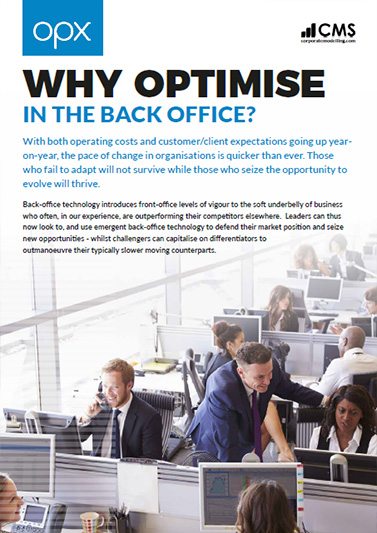Growing companies actively strive to increase their business capacity needs. By business capacity, we refer to the time available for carrying out work activities. In order to meet increasing business demand, the management needs to make crucial decisions about carrying out relevant organisational changes. This either involves increasing the number of employees, or implementing technology solutions that can assist the management, relieving the need for additional personnel. In other words, the management needs to prepare for utilisation of workforce resources.
Utilisation is a key metric
Workforce utilisation tells us how much of the employees’ time available is actually actively used to perform their tasks.
The time available for each employee can be calculated through the following equation:
Available to work = (End Time – Start time ) – Breaks
e.g. available to work = (5pm – 9am) – 60 mins (lunch) – 15 mins (morning break ) – 15mins (afternoon break )
= 480 – 90
= 390 minutes a day available for scheduled work
It is expected that each employee is not working fully focused through 390 minutes a day.
The employees might also not always have a clear picture of the task requirements and the completion order for their assigned daily workload. Additionally, the tasks are not always allocated accurately to the employee skillset. In some cases, employees need to wait for the team leader to assign tasks to the next queue. During this, the employee time is available and could potentially be spent on:
- Doing casework
- Doing non-transactional work
- Sitting doing nothing, awaiting the next task to work on
The first and the second option are both value-adding work, but is it clear for your employees what to put their hands on at any given time?
1. Workforce Utilisation Challenge – How does an employee usually find out about the work that has to be done?
Companies often use spreadsheets of cases that need to be worked on or weekly planners based on expected demand patterns simulated in a planning tool. Both of these are highly inefficient as:
- There is often a lot of variation in the time it takes to work a case, which can lead to an overestimate of the time needed to complete a set of cases.
- Often there are no times or estimates for the non-transaction work users are asked to do.
- When a user gets to the end of a spreadsheet list or work runs out in the queue, there is a delay before the team leader assigns more tasks to the user.
All of these mean that a user can end up idle with no planned or allocated work for them to do. This is often as high as 10% or more of their available work time. In such a case, the utilisation of the workforce is therefore only 90%.
Over a week, for a team of 10, we see:
5 (number of working days in a week) x 10 (number of employees) x 39 (10% idle time)
= 1950 minutes
This is about 0.86 FTE – it’s like having almost an extra employee available for other activities.
2. Workforce Utilisation Challenge – How do we get the free capacity?
As mentioned at the beginning of this article, workforce utilisation can be done by hiring more staff or implementing new technologies.
What are these technologies, and how do they work?
- The workflow system enables employee management and task allocation. It also provides comprehensive data on how the employees perform their work.
- RPA technology – Robotic Process Automation offers bots that replace employees in performing repetitive tasks.
What if we connect both workflow and RPA technologies? We achieve a system which helps to manage and control the whole back office.
We have developed such a system. It is OPX.
OPX removes the spreadsheet or the need to worry about the issues with the weekly projected demand plans being accurate. How?
OPX has all the service demands from customers and internal stakeholders. The system knows who in the team is available to work and what skills they have at a very granular level, enabling the OPX Get-Next functionality to algorithmically optimise task allocation.
Get the right work to the right people at the right time.
Team leaders can manually configure which activity queues (service request backlogs) their team members work on. They can also leave the planning process to OPX, which will always schedule the most appropriate work to the most appropriate person. As a result OPX utilises the workforce.
Once a team leader assigns the queue, perhaps to follow a weekly plan they had, OPX can still help get the Free Capacity by:
- Showing which cases in a queue a specific user can handle. If a user is on a queue with plenty of cases, but they do not have the required skills to complete them, this would be highlighted to the team leader.
- Showing in real-time who is currently idle and may have run out of work given their activity queue allocation.
OPX always allocates the work in real-time and can be set to do it automatically. By automatically allocating the best possible piece of work suited to each individual user we ensure the lowest possible idle time within our teams.
As a management, you gain a free capacity, which can be used, for example, to perform more cases, revisions, or improving customer service and training.







 Thank you for your interest in our whitepaper. You can download Workforce Optimisation vs Workforce Management by clicking the button below.
Thank you for your interest in our whitepaper. You can download Workforce Optimisation vs Workforce Management by clicking the button below. Thank you for your interest in our case study. You can download the HCL IBS Case Study by clicking the button below.
Thank you for your interest in our case study. You can download the HCL IBS Case Study by clicking the button below. Thank you for your interest in our case study. You can download the ReAssure Case Study by clicking the button below.
Thank you for your interest in our case study. You can download the ReAssure Case Study by clicking the button below. Thank you for your interest in our case study. You can download the Student Loans Case Study by clicking the button below.
Thank you for your interest in our case study. You can download the Student Loans Case Study by clicking the button below. Thank you for your interest in our case study. You can download the Principality Building Society Case Study by clicking the button below.
Thank you for your interest in our case study. You can download the Principality Building Society Case Study by clicking the button below. Thank you for your interest in our whitepaper. You can download WorkFlow vs WorkForce Management by clicking the button below.
Thank you for your interest in our whitepaper. You can download WorkFlow vs WorkForce Management by clicking the button below. Thank you for your interest in our whitepaper. You can download Homeworking in Financial Services Operations by clicking the button below.
Thank you for your interest in our whitepaper. You can download Homeworking in Financial Services Operations by clicking the button below. Thank you for your interest in our whitepaper. You can download Workforce Optimisation for the Back Office by clicking the button below.
Thank you for your interest in our whitepaper. You can download Workforce Optimisation for the Back Office by clicking the button below. Thank you for your interest in our whitepaper. You can download Operational Workforce Management: Build or Buy? by clicking the button below.
Thank you for your interest in our whitepaper. You can download Operational Workforce Management: Build or Buy? by clicking the button below. Thank you for your interest in our whitepaper. You can download Homeworking & Back Office Workforce Optimisation by clicking the button below.
Thank you for your interest in our whitepaper. You can download Homeworking & Back Office Workforce Optimisation by clicking the button below. Thank you for your interest in our whitepaper. You can download Why Optimise in the Back Office? by clicking the button below.
Thank you for your interest in our whitepaper. You can download Why Optimise in the Back Office? by clicking the button below.